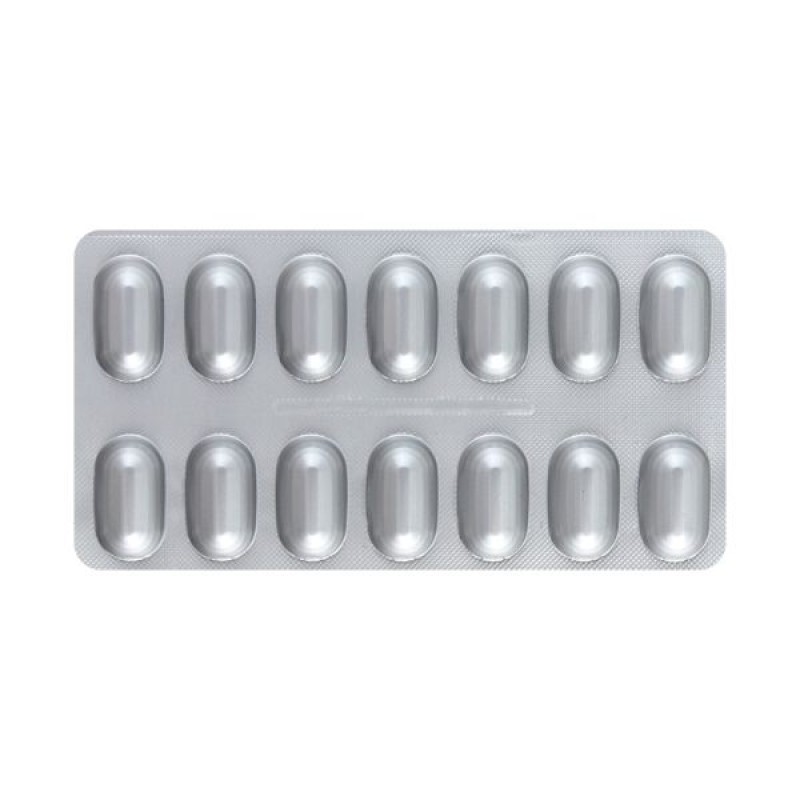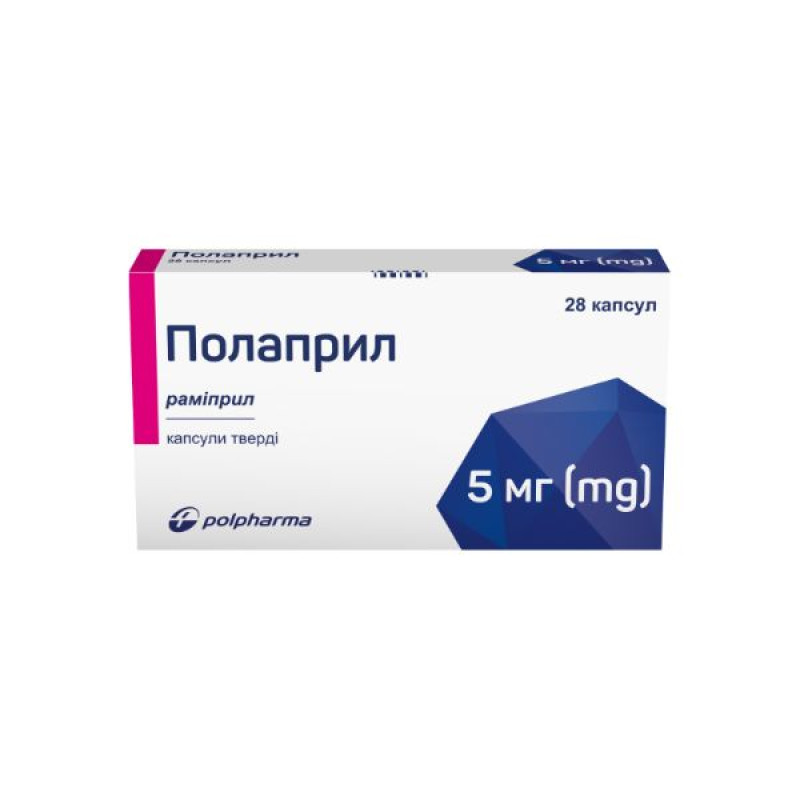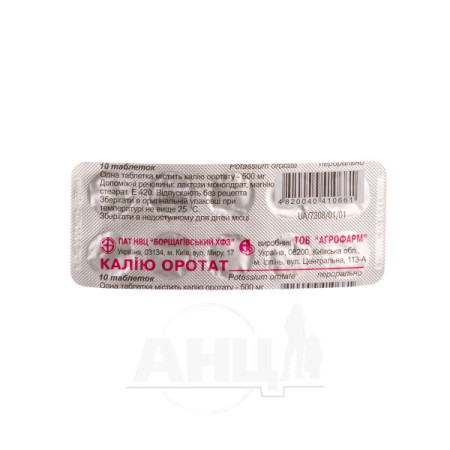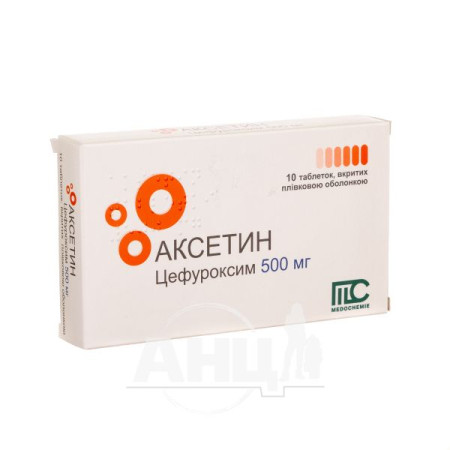Polapril hard capsules 5 mg blister No. 28
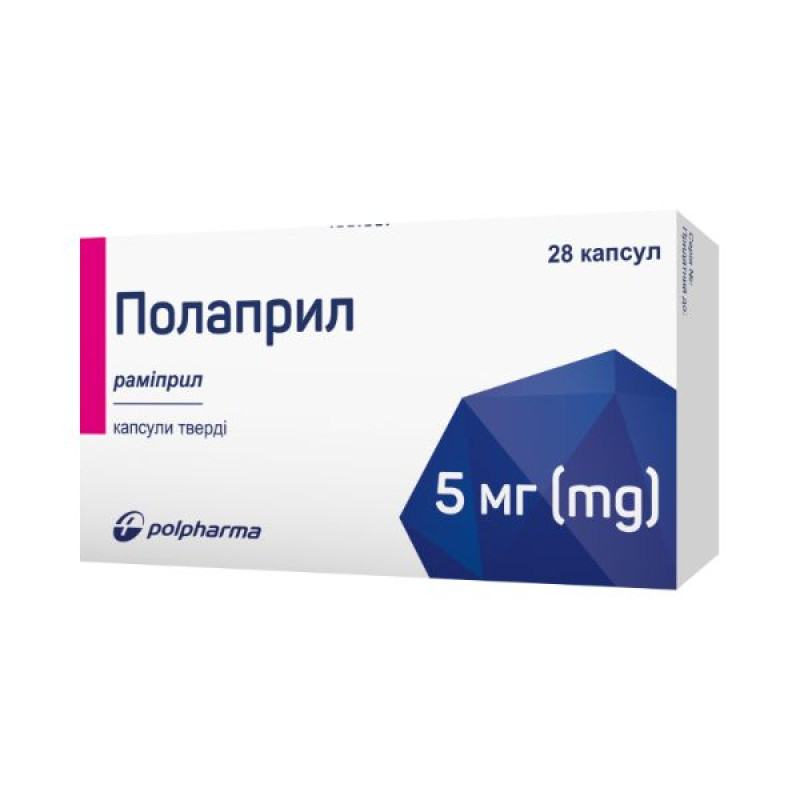
Instructions Polapril hard capsules 5 mg blister No. 28
Composition
active substance: ramipril;
1 capsule contains 2.5 mg or 5 mg or 10 mg of ramipril;
auxiliary substances: pregelatinized starch, gelatin, purified water, titanium dioxide (E 171), iron oxide black (E 172), indigo carmine (E 132), iron oxide yellow (E 172).
Medicinal form
Hard capsules.
The main physical and chemical properties:
for a dosage of 2.5 mg: hard gelatin capsule No. 4, having a light gray body with the marking "2.5" and a light green cap with the marking "R". The capsule contains a white or almost white powder;
for a dosage of 5 mg: hard gelatin capsule No. 4, having a light gray body with the marking "5" and a green cap with the marking "R". The capsule contains a white or almost white powder;
for a dosage of 10 mg: hard gelatin capsule No. 4, having a light gray body with the marking "10" and a dark green cap with the marking "R". The capsule contains a white or almost white powder.
Pharmacotherapeutic group
Angiotensin-converting enzyme (ACE) inhibitors.
ATX code C09A A05.
Pharmacological properties
Pharmacodynamics.
Ramiprilat, an active metabolite of ramipril, inhibits the enzyme dipeptidylcarboxypeptidase I (synonyms: angiotensin-converting enzyme; kininase II). In blood plasma and tissues, this enzyme catalyzes the transformation of angiotensin I into an active vasoconstrictor substance (vasoconstrictor) angiotensin II, as well as the breakdown of the active vasodilator bradycardin. A decrease in the formation of angiotensin II and inhibition of the breakdown of bradykinin causes the expansion of blood vessels.
Since angiotensin II also stimulates the release of aldosterone, the secretion of aldosterone decreases as a result of the action of ramiprilat. The growth of bradykinin activity obviously causes cardioprotective and endothelioprotective effects. At present, it is not established how much this affects the development of certain undesirable effects (for example, non-productive cough).
ACE inhibitors are effective even for patients with arterial hypertension, in whom the concentration of renin in blood plasma is low. The average response to monotherapy with an ACE inhibitor in patients of black race (usually in the population with arterial hypertension and low renin concentration) was lower compared to representatives of other races.
Taking ramipril causes a marked decrease in the resistance of peripheral arteries. In general, renal plasma flow and glomerular filtration rate do not change significantly.
The use of ramipril in patients with arterial hypertension leads to a decrease in blood pressure in the lying and standing position without a compensatory increase in heart rate.
In most patients, the antihypertensive effect after oral administration of a single dose manifests itself after 1-2 hours. The maximum effect of a single dose, as a rule, is reached after 3-6 hours and usually lasts 24 hours.
The maximum antihypertensive effect with long-term treatment with ramipril is generally observed after 3-4 weeks. It was found that with long-term therapy, it persists for 2 years.
In response to abrupt discontinuation of ramipril, there is no rapid and strong increase in blood pressure.
In patients with clinical manifestations of heart failure, whose treatment began 3-10 days after an acute myocardial infarction, ramipril reduced the risk of mortality by 27% compared to placebo.
In patients with non-diabetic or diabetic overt nephropathy, ramipril reduces the rate of progression of renal failure and the onset of end-stage renal failure, and as a result requires dialysis or kidney transplantation. In patients with non-diabetic or diabetic initial nephropathy, ramipril reduces albumin excretion.
Ramipril significantly reduces the incidence of myocardial infarction, stroke, or cardiovascular death. In addition, ramipril reduces overall mortality and the need for revascularization, as well as delays the onset and progression of congestive heart failure. Ramipril reduces the risk of developing nephropathy in the general population and in patients with diabetes. Ramipril also significantly reduces the incidence of microalbuminuria. Such effects were observed in both hypertensive and normotensive patients.
Pharmacokinetics. The only active metabolite of ramipril - ramiprilat - is formed in the liver by hydrolysis.
The bioavailability of ramiprilat after oral administration of 2.5 and 5 mg of ramipril is approximately 45% compared to its availability after intravenous administration of the same doses.
After oral administration of 10 mg of ramipril, approximately 40% is excreted in feces, 60% in urine.
Approximately 80-90% of metabolites in urine and bile are ramiprilat or ramiprilat metabolites.
In the course of animal studies, it was established that ramipril penetrates into breast milk.
The peak plasma concentration of ramipril is reached 1 hour after oral administration. The half-life of ramipril is approximately 1 hour. The peak concentration of ramiprilat in blood plasma is observed between 2 and 4 hours after oral administration of ramiprilat.
The decrease in the concentration of ramiprilat in blood plasma occurs in several phases. The half-life of the initial phase of distribution and elimination is approximately 3 hours. After that, there is a transitional phase (the elimination half-life is approximately 15 hours), and then the final phase (the elimination half-life is approximately 4-5 days).
The presence of the final phase is due to the slow dissociation of ramiprilat from a close but saturated bond with ACE.
After a single intake of ramipril at a dose of 2.5 mg or higher, the stationary state - when the plasma concentrations of ramiprilat remain constant - is reached after approximately 4 days. After taking multiple doses, the effective half-life is 13-17 hours, depending on the dose.
The binding of ramipril and ramiprilat to serum proteins is approximately 73% and 56%, respectively.
In healthy patients aged 65 to 76 years, the kinetics of ramipril and ramiprilat are similar to those observed in young healthy individuals.
When kidney function deteriorates, the excretion of ramiprilat by the kidneys decreases, the renal clearance of ramiprilat decreases in proportion to creatinine clearance. This causes an increase in plasma concentrations of ramiprilat, which decrease much more slowly than in persons with normal kidney function.
When using high doses (10 mg) with impaired liver function, the conversion of ramipril to ramiprilat occurs later, the plasma concentration of ramipril increases and the excretion of ramiprilat slows down.
Both in healthy individuals and in patients with arterial hypertension after oral administration
5 mg of ramipril once a day for 2 weeks, significant accumulation of ramipril and ramiprilat was not observed in patients with congestive heart failure.
Indications for use
Treatment of arterial hypertension.
Prevention of cardiovascular diseases: reduction of cardiovascular morbidity and mortality in patients with:
- severe cardiovascular disease of atherothrombotic origin (presence in history of ischemic heart disease or stroke or peripheral vascular disease);
- diabetes, which have at least one cardiovascular risk factor (see the section "Pharmacological properties").
Treatment of kidney disease:
- initial glomerular diabetic nephropathy, which is evidenced by the presence of microalbuminuria;
- severe glomerular diabetic nephropathy, evidenced by the presence of macroproteinuria, in patients with at least one cardiovascular risk factor (see section "Pharmacological properties");
- pronounced glomerular nondiabetic nephropathy, which is evidenced by the presence of macroproteinuria ≥ 3 g/day (see the section "Pharmacological properties").
Treatment of heart failure accompanied by clinical manifestations.
Secondary prevention after an acute myocardial infarction: reduction of mortality during the acute stage of myocardial infarction in patients with clinical signs of heart failure, provided that treatment is started more than 48 hours after the onset of an acute myocardial infarction.
Contraindications
Increased sensitivity to the active substance or to any of the auxiliary substances included in the composition of the drug, or to other ACE (angiotensin-converting enzyme) inhibitors (see the "Composition" section).
Presence of angioneurotic edema in the anamnesis (hereditary, idiopathic or previously transferred against the background of the use of ACE inhibitors or angiotensin II receptor antagonists).
Significant bilateral renal artery stenosis or renal artery stenosis in the presence of a single functioning kidney.
Pregnant women or women who plan to become pregnant (see the section "Use during pregnancy and breastfeeding").
Ramipril should not be used in patients with arterial hypotension or hemodynamically unstable conditions.
It should not be used together with drugs containing aliskiren in patients with diabetes mellitus or moderate or severe renal insufficiency (GFR < 60 ml/min).
It is necessary to avoid the simultaneous use of ACE inhibitors and extracorporeal treatment methods that lead to blood contact with negatively charged surfaces, since such use can lead to severe anaphylactoid reactions. Such extracorporeal treatment methods include dialysis or hemofiltration using certain membranes with high hydraulic permeability (for example, polyacrylonitrile) and apheresis of low-density lipoproteins using dextran sulfate.
Primary hyperaldosteronism.
Interaction with other medicinal products and other types of interactions
Methods of extracorporeal therapy, as a result of which there is contact of blood with negatively charged surfaces, such as dialysis or hemofiltration using certain membranes with high flow intensity (for example, membranes made of polyacrylonitrile) and apheresis of low-density lipoproteins with the use of dextran sulfate - given the increased risk of developing severe anaphylactoid reactions (see the section "Contraindications"). If such treatment is necessary, the question of using a second dialysis membrane or the use of a second class of antihypertensive agents should be considered.
The combined use of Polapril with medicinal products containing aliskiren is contraindicated in patients with diabetes mellitus or moderately severe kidney function disorders and is not recommended for other categories of patients (see sections "contraindications" and "special features of use").
Combinations requiring precautions.
Potassium salts, heparin, potassium-sparing diuretics and other active substances that increase the level of potassium in blood plasma (including angiotensin II antagonists, trimethoprim, tacrolimus, cyclosporine). Hyperkalemia may occur, so it is necessary to carefully monitor the level of potassium in the blood plasma.
Antihypertensive drugs (for example, diuretics) and other substances that can lower blood pressure (for example, nitrates, tricyclic antidepressants, anesthetics, alcohol, baclofen, alfuzosin, doxazosin, prazosin, tamsulosin, terazosin). An increase in the risk of arterial hypotension should be expected (see the section "Particulars of use" regarding diuretics).
Vasopressor sympathomimetics and other substances (for example, isoproterenol, dobutamine, dopamine, epinephrine), which can reduce the antihypertensive effect of Polapril. It is recommended to carefully monitor blood pressure.
Allopurinol, immunosuppressants, corticosteroids, procainamide, cytostatics and other substances that can cause changes in the blood picture.
Increased probability of occurrence of hematological reactions (see the section "Peculiarities of application").
Lithium salts. ACE inhibitors can reduce the excretion of lithium, which can lead to an increase in lithium toxicity. It is necessary to carefully monitor the level of lithium.
Antidiabetic agents, including insulin. Hypoglycemic reactions may occur. It is recommended to carefully monitor the level of glucose in the blood.
Nonsteroidal anti-inflammatory drugs (NSAIDs) and acetylsalicylic acid. A decrease in the antihypertensive effect of Polapril is expected. Moreover, the simultaneous use of ACE inhibitors and NSAIDs may be accompanied by an increased risk of deterioration of kidney function and an increase in the level of potassium in the blood.
G. Excessive salt consumption may weaken the hypotensive effect of the drug.
Specific hyposensitization. As a result of ACE inhibition, the probability and severity of anaphylactic and anaphylactoid reactions to insect venom increases. It is believed that such an effect can also be observed in relation to other allergens.
Features of use
Special categories of patients.
Double blockade of the renin-angiotensin-aldosterone system (RAAS) with the help of drugs containing aliskiren.
Double blockade of the renin-angiotensin-aldosterone system by the combined use of the drug Polapril and aliskiren is not recommended, as there is an increased risk of developing arterial hypotension, hyperkalemia and changes in kidney function.
Combined use of Polapril and aliskiren is contraindicated in patients with diabetes mellitus or impaired kidney function (GFR less than 60 ml/min) (see section "Contraindications").
Patients who have a special risk of arterial hypotension.
Patients with a significant increase in the activity of the renin-angiotensin-aldosterone system. In patients with a significant increase in the activity of the renin-angiotensin-aldosterone system, there is a risk of a sudden significant drop in blood pressure and deterioration of kidney function due to ACE inhibition, especially if an ACE inhibitor or a concomitant diuretic is prescribed for the first time or the dose is increased for the first time. A significant increase in the activity of the renin-angiotensin-aldosterone system, which requires medical supervision, including constant monitoring of blood pressure, can be expected, for example, in patients:
- with severe arterial hypertension;
- with decompensated congestive heart failure;
- with a hemodynamically significant obstacle to the inflow or outflow of blood from the left ventricle (for example, with stenosis of the aortic or mitral valve);
- with unilateral stenosis of the renal artery in the presence of a second functioning kidney;
- who have or may develop a lack of fluid or electrolytes (including those who receive diuretics);
- with liver cirrhosis and/or ascites;
As a rule, it is recommended to correct dehydration, hypovolemia, or lack of electrolytes before starting treatment (however, for patients with heart failure, such corrective measures should be carefully weighed against the risk of volume overload).
In patients with impaired liver function, the response to treatment with Polapril may be either increased or decreased. In addition, in patients with severe cirrhosis of the liver, which is accompanied by edema and/or ascites, the activity of the renin-angiotensin system can be significantly increased; therefore, special care must be taken when treating these patients.
Transient or persistent heart failure after myocardial infarction.
Patients who are at risk of cardiac or cerebral ischemia in case of acute arterial hypotension. In the initial phase of treatment, special medical supervision is required.
Elderly patients.
See the section "Method of administration and dosage".
Surgical intervention. If this is possible, treatment with angiotensin-converting enzyme inhibitors, such as ramipril, should be stopped 1 day before surgery.
Control of kidney function.
Kidney function should be assessed before and during treatment and the dose should be adjusted, especially in the first weeks of treatment. Especially careful monitoring is necessary for patients with impaired kidney function (see the section "Method of administration and dosage"). There is a risk of deterioration of renal function, especially in patients with congestive heart failure or after a kidney transplant.
Angioedema.
In patients receiving ACE inhibitors, including ramipril, angioneurotic edema was observed (see the section "Side effects"). If angioedema develops, Polapril should be discontinued. Urgent therapy should be started immediately. The patient must be under medical supervision for at least 12-24 hours and can be discharged after the complete disappearance of symptoms.
Cases of intestinal angioedema have been observed in patients receiving ACE inhibitors, including Polapril (see section "Side effects"). These patients complained of abdominal pain (with or without nausea/vomiting).
Anaphylactic reactions during desensitization. When using ACE inhibitors, the probability and severity of anaphylactic and anaphylactoid reactions to insect venom and other allergens increases. Before carrying out desensitization, you should temporarily stop taking Polapril.
Control of electrolyte balance. Hyperkalemia.
Hyperkalemia has been observed in some patients receiving ACE inhibitors, including Polapril. The risk group of hyperkalemia includes patients with renal failure, patients over 70 years of age, patients with uncontrolled diabetes, patients who take potassium salts, potassium-sparing diuretics, as well as other active substances that increase the potassium content in the blood plasma, or patients with such conditions as dehydration, acute cardiac decompensation, metabolic acidosis. If the joint use of the above-mentioned drugs is considered appropriate, it is recommended to regularly monitor the level of potassium in the blood plasma (see the section "Interaction with other medicinal products and other types of interactions").
Control of electrolyte balance. Hyponatremia. In some patients receiving ramipril, a syndrome of inadequate secretion of antidiuretic hormone with subsequent development of hyponatremia was observed. It is recommended to regularly monitor serum sodium levels in the elderly and in other patients who are at risk of developing hyponatremia.
Neutropenia/agranulocytosis.
Cases of neutropenia/agranulocytosis, as well as thrombocytopenia and anemia, were observed rarely. Bone marrow suppression has also been reported. In order to detect possible leukopenia, it is recommended to control the number of leukocytes in the blood. More frequent control is preferably carried out at the beginning of treatment and for patients with impaired kidney function, concomitant collagenosis (for example, systemic lupus erythematosus or scleroderma) or subjects who take other drugs that can cause changes in the blood picture (see the sections "Interaction with other drugs and other types of interactions" and "Side reactions").
Ethnic differences. ACE inhibitors more often cause angioneurotic edema in patients of the Negroid race than in representatives of other races. Like other ACE inhibitors, the hypotensive effect of ramipril may be less pronounced in patients of black race compared to representatives of other races. This may be due to the fact that in patients of the Negroid race with arterial hypertension, arterial hypertension with low renin activity is more often observed.
Cough. Cough has been reported when using ACE inhibitors. Characteristically, the cough is unproductive, long-lasting and disappears after stopping therapy. In the differential diagnosis of cough, one should remember the possibility of a cough due to the use of ACE inhibitors.
Use during pregnancy or breastfeeding
The drug is contraindicated for pregnant women or women who plan to become pregnant. If pregnancy is established during therapy, the drug should be stopped immediately and, if necessary, replaced with another drug approved for use by pregnant women (see section "Contraindications").
Breast feeding. Due to the lack of information on the use of ramipril during breastfeeding (see the section "Pharmacological properties"), it is not recommended to prescribe this drug to women who are breastfeeding, and it is advisable to give preference to other drugs, the use of which during lactation is safer, especially when breastfeeding newborns or premature babies.
The ability to influence the speed of reaction when driving a motor vehicle or other mechanisms
Some side effects (for example, a decrease in blood pressure, drowsiness, impaired vision, dizziness) may worsen the attention and speed of the patient's reaction. If such reactions occur, one should refrain from driving a motor vehicle or working with other mechanisms.
This may occur especially at the beginning of treatment or when switching from other drugs. After the first dose or a further increase in the dose, it is not recommended to drive a vehicle or machinery for several hours.
Method of application and dosage
Drug for oral use.
Polapril is recommended to be taken at the same time every day. The drug can be taken before, during and after meals, since food intake does not affect the bioavailability of the drug. Polapril tablets should be swallowed whole with water. They cannot be chewed or crushed.
Adults.
Patients who use diuretics. At the beginning of treatment with Polapril, arterial hypotension may occur, the development of which is more likely in patients who are simultaneously receiving diuretics. In such cases, it is recommended to exercise caution, since in these patients a decrease in BCC and / or the amount of electrolytes is possible.
It is desirable to stop the use of the diuretic 2-3 days before the start of treatment with Polapril, if possible (see the section "Particulars of application").
In patients with arterial hypertension who cannot cancel the diuretic, treatment with the drug Polapril should begin with a dose of 1.25 mg (used in the appropriate dosage). It is necessary to carefully monitor the function of the kidneys and the level of potassium in the blood. Further dosing of Polapril should be adjusted depending on the target blood pressure level.
Arterial hypertension.
The dose should be selected individually, depending on the characteristics of the patient's condition (see the section "Peculiarities of use") and the results of control blood pressure measurements. Polapril can be used as monotherapy or in combination with other classes of antihypertensive drugs.
Initial dose. Treatment with the drug Polapril should be started gradually, with the recommended starting dose of 2.5 mg per day.
In patients with significant activation of the renin-angiotensin-aldosterone system, a significant decrease in blood pressure may occur after taking the initial dose. For such patients, the recommended starting dose is 1.25 mg (to be used in the appropriate dosage), and their treatment should be started under medical supervision (see Section "Peculiarities").
Dose titration and maintenance dose. The dose can be doubled every 2-4 weeks until the target blood pressure level is reached; the maximum dose of Polapril is 10 mg per day. As a rule, the drug should be taken once a day.
Prevention of cardiovascular diseases.
Initial dose. The recommended initial dose of Polapril is 2.5 mg once a day.
Dose titration and maintenance dose. Depending on the individual tolerability of the drug, the dose should be gradually increased. It is recommended to double the dose after 1-2 weeks of treatment, and then - after another 2-3 weeks - to increase it to the target maintenance dose of 10 mg once a day.
Also, see the above information regarding the dosage of the drug for patients receiving diuretics.
Treatment of kidney disease.
In patients with diabetes and microalbuminuria.
Initial dose. The recommended initial dose of Polapril is 1.25 mg (used in the appropriate dosage) once a day.
Dose titration and maintenance dose. Depending on the individual tolerability of the drug, the dose should be increased during further treatment. After 2 weeks of treatment, the single daily dose is recommended to be doubled to 2.5 mg, and then to 5 mg after another 2 weeks of treatment.
In patients with diabetes and at least one cardiovascular risk factor.
Initial dose. The recommended initial dose of Polapril is 2.5 mg once a day.
Dose titration and maintenance dose. Depending on the individual tolerability of the drug, the dose should be increased during further treatment. After 1-2 weeks of treatment, the daily dose of Polapril is recommended to be doubled to 5 mg, and then to 10 mg after another 2-3 weeks of treatment. The target daily dose is 10 mg.
Initial dose. The recommended initial dose of Polapril is 1.25 mg (used in the appropriate dosage) once a day.
Dose titration and maintenance dose. Depending on the patient's individual tolerability of the drug, the dose should be increased during further treatment. After 2 weeks of treatment, the single daily dose is recommended to be doubled to 2.5 mg, and then to 5 mg after another 2 weeks of treatment.
Heart failure with clinical manifestations.
Initial dose. For patients whose condition has stabilized after treatment with diuretics, the recommended starting dose is 1.25 mg (used in the appropriate dosage) per day.
Dose titration and maintenance dose. The dose of Polapril should be titrated by doubling it every 1-2 weeks until reaching the maximum daily dose of 10 mg. It is advisable to divide the dose into 2 doses.
Secondary prevention after an acute myocardial infarction in the presence of heart failure.
Initial dose. 48 hours after the occurrence of a myocardial infarction, patients whose condition is clinically and hemodynamically stable should be prescribed an initial dose of 2.5 mg 2 times a day for 3 days. If the initial dose of 2.5 mg is poorly tolerated, a dose of 1.25 mg should be used (applied in the appropriate dosage) 2 times a day for 2 days with a subsequent increase to 2.5 mg and 5 mg 2 times a day. If the dose cannot be increased to 2.5 mg 2 times a day, the treatment should be canceled.
Also, see the above information about the dosage of the drug for patients receiving diuretics.
Dose titration and maintenance dose. In the future, the daily dose should be increased by doubling it with an interval of 1-3 days until reaching the target maintenance dose of 5 mg 2 times a day.
When possible, the maintenance daily dose should be divided into 2 doses.
If the dose cannot be increased to 2.5 mg 2 times a day, the treatment should be canceled. The experience of treating patients with severe (IV FC according to the NYHA classification) heart failure immediately after myocardial infarction is still insufficient. If the decision is made to treat such patients with this drug, it is recommended to start therapy with a dose of 1.25 mg (used in the appropriate dosage) once a day, and any increase should be done with extreme caution.
Special categories of patients.
Patients with impaired kidney function. The daily dose for patients with impaired renal function depends on the creatinine clearance index (see the section "Pharmacological properties"):
- if the creatinine clearance is ≥ 60 ml/min, there is no need to adjust the initial dose (2.5 mg/day), and the maximum daily dose is 10 mg;
- if creatinine clearance is 30-60 ml/min, there is no need to adjust the initial dose (2.5 mg/day), and the maximum daily dose is 5 mg;
- if creatinine clearance is 10-30 ml/min, the initial daily dose is 1.25 mg/day (used in the appropriate dosage), and the maximum daily dose is 5 mg;
- patients with arterial hypertension who are on hemodialysis: during hemodialysis, ramipril is excreted to an insignificant degree; the initial dose is 1.25 mg (used in the appropriate dosage), and the maximum daily dose is 5 mg; the drug should be taken several hours after the hemodialysis session.
Patients with impaired liver function (see section "Pharmacological properties"). Patients with impaired liver function should be treated with Polapril under close medical supervision, and the maximum daily dose in such cases should be 2.5 mg.
Elderly patients. The initial dose should be lower, and further titration of the dose should be carried out more gradually, taking into account the high probability of side effects, especially in very old and infirm patients. In such cases, a lower starting dose of 1.25 mg (used in the appropriate dosage) of ramipril should be prescribed.
Also, see the above information about the dosage of the drug for patients receiving diuretics.
Children
The drug Polapril is not recommended for use in children, since there are insufficient data on the effectiveness and safety of this drug for such patients.
Overdose
Symptoms associated with an overdose of ACE inhibitors may include excessive peripheral vasodilatation (with pronounced arterial hypotension, shock), bradycardia, electrolyte imbalance, and renal failure. The patient's condition should be carefully monitored and symptomatic and supportive therapy should be provided. Proposed treatment measures include primary detoxification (gastric lavage, administration of adsorbents), as well as measures aimed at restoring stable hemodynamics, including administration of alpha-1 adrenoceptor agonists or angiotensin II (angiotensinamide). Ramiprilat, the active metabolite of ramipril, is poorly removed from the systemic circulation by hemodialysis.
Adverse reactions
The frequency of adverse reactions is classified as follows: very often (≥ 1/10); often (from ≥ 1/100 to < 1/10); infrequently (from ≥ 1/1000 to < 1/100); rarely (from ≥ 1/10000 to < 1/1000); very rare (< 1/10,000), unknown (cannot be calculated based on available data). In each group, side effects are presented in order of decreasing severity.
From the heart system
Infrequently: myocardial ischemia, including angina or myocardial infarction, tachycardia, arrhythmia, feeling of increased heartbeat, peripheral edema.
From the blood and lymphatic system
Uncommon: eosinophilia.
Rarely: a decrease in the number of leukocytes (including neutropenia or agranulocytosis), a decrease in the number of erythrocytes, a decrease in hemoglobin, a decrease in the number of platelets.
Frequency unknown: bone marrow failure, pancytopenia, hemolytic anemia.
From the nervous system
Often: headache, dizziness.
Uncommon: vertigo, paresthesia, ageusia, dysgeusia.
Rarely: tremor, imbalance.
The frequency is unknown: cerebral ischemia, including ischemic stroke and transient ischemic attack, violation of psychomotor functions, burning sensation, parosmia.
From the side of the organs of vision
Infrequent: visual impairment, including blurred vision.
Rarely: conjunctivitis.
On the part of the organs of hearing and the labyrinth
Rarely: hearing impairment, tinnitus.
From the respiratory system and mediastinal organs
Often: unproductive irritating cough, bronchitis, sinusitis, shortness of breath.
Infrequent: bronchospasm, including exacerbation of asthma; nasal congestion
From the side of the gastrointestinal tract
Often: inflammatory phenomena in the gastrointestinal tract, digestive disorders, abdominal discomfort, dyspepsia, diarrhea, nausea, vomiting.
Infrequently: pancreatitis (in isolated cases, fatal outcomes were reported with the use of ACE inhibitors), increased levels of pancreatic enzymes, angioneurotic edema of the small intestine, pain in the upper abdomen, including gastritis, constipation, dry mouth.
Rare: glossitis.
Frequency unknown: aphthous stomatitis.
From the side of the kidneys and urinary tract
Uncommon: impaired renal function, including acute renal failure, increased urinary output, worsening of background proteinuria, increased blood urea, increased blood creatinine.
From the side of the skin and subcutaneous tissues
Often: rashes, in particular maculopapular.
Uncommon: angioedema; in very exceptional cases - a violation of the patency of the respiratory tract due to angioneurotic edema, which can have a fatal outcome; itching, hyperhidrosis.
Rarely: exfoliative dermatitis, urticaria, onycholysis.
Very rare: photosensitivity reactions.
The frequency is unknown: toxic epidermal necrolysis, Stevens-Johnson syndrome, erythema multiforme, pemphigus, exacerbation of psoriasis, psoriatic dermatitis, pemphigoid or lichenoid exanthema or enanthema, alopecia.
From the musculoskeletal system and connective tissue
Often: muscle spasms, myalgia.
Uncommon: arthralgia.
From the endocrine system
Frequency unknown: syndrome of inappropriate secretion of antidiuretic hormone (SNSAG).
From the side of nutrition and metabolism
Often: an increase in the level of potassium in the blood.
Uncommon: anorexia, decreased appetite.
Frequency unknown: decrease in blood sodium level.
From the side of the vascular system
Often: arterial hypotension, orthostatic decrease
There are no reviews for this product.
There are no reviews for this product, be the first to leave your review.
No questions about this product, be the first and ask your question.







